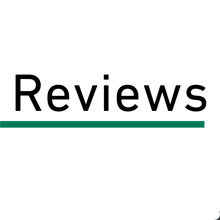Reviews
Issue: Light
11 August 2015 article

Cases in Medical Microbiology and Infectious Diseases (4th Edition)
EDITED BY P. H. GILLIGAN, D. S. SHAPIRO & M. B. MILLER
ASM PRESS (2014)
US$80.00 ISBN 978-1555818685
Cases in Medical Microbiology and Infectious Diseases is aimed at students as well as clinical professionals. The book provides practical understanding of the clinical importance of basic science concepts and the fourth edition incorporates the major advances in molecular biology and their applications in clinical diagnosis, experienced in the last decade.
The book contains 72 cases, including 42 new ones and 32 updated cases, reflecting the current state and latest advances relating to the diagnosis and treatment of the organisms causing the infection. The cases are divided into chapters according to their target area. There is also an introductory chapter, highlighting modern molecular-based assays and their different applications, and an advanced cases chapter which includes newly recognised disease agents as well as cases of high complexity.
I find the book to be very well written and structured. At the beginning of each section, there is a list of pathogens to be considered, including their general characteristics and associated symptoms. After each individual case, the authors include a series of questions, which the student should be answering to identify the etiology of the case, followed by a very clear and extended discussion of each individual answer. The book also includes a table of normal values and a glossary of medical terms.
I particularly like the extensive figures found across all cases, which include key radiographic, laboratory, clinical or pathological findings as well as, very importantly, macroscopic and microscopic images of most of these micro-organisms, to help the readers familiarise themselves with the different morphologies that the pathogens present.
Because of the clarity of the text, its wide coverage and topical relevance, I would expect this book to be extensively used as reference by anyone working or studying clinical diagnosis of infectious diseases and/or medical microbiology.
LORENA FERNÁNDEZ-MARTÍNEZ
John Innes Centre
Modern Techniques for Pathogen Detection
EDITED BY J. POPP & M. BAUER
WILEY-BLACKWELL (2015)
£90.00 ISBN 978-3527335169
As indicated by the title, this book presents the techniques currently available for the detection of pathogens, whether these techniques are based upon the direct detection of the entire pathogen, detection of pathogen components (such as proteins, antigens or nucleic acids), or by propagation of the pathogen and subsequent identification. A large proportion of the chapters of this book focus on detection of pathogen components, reflecting the move away from pathogen propagation in diagnostic and research laboratories, in the interest of speed of diagnosis and specimen throughput. Some of the techniques of direct detection of pathogen components also have the greater potential of differentiating between highly related pathogens, as well as an indication of antimicrobial drug resistance. Since these newer techniques detect proteins or nucleic acids, they are able to detect these components of different types of pathogens, whether they are bacteria, viruses, fungi or protozoa. It is therefore not surprising some diagnostic departments are changing their names from ‘Bacteriology’, ‘Virology’ and ‘Mycology’ for example, to ones like ‘Infection Sciences’ since diagnosis is based more on technology than the structure and function of the pathogen itself. This book focuses on the technologies available for pathogen detection but I think the book would benefit from more of a discussion of the impact that these new technologies are having on time, specificity and costs of diagnosis, laboratory automation, staffing levels in laboratories and the skills required by those staff. The changes in the way that pathogens are detected, is being increasingly associated with centralisation of diagnostic services and I believe that the book could have also included more discussion of the effect of these technologies on patient management. The material in this book will be of interest to students and researchers of infectious diseases, diagnostic practitioners and clinicians; however, the price tag of £90 is inevitably going to restrict its purchase to institutions rather than individuals.
CHRISTOPHER RING
Middlesex University
